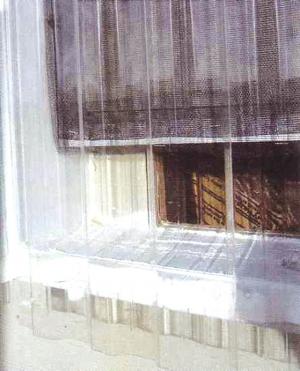2024 - Volume #48, Issue #4, Page #24
[ Sample Stories From This Issue | List of All Stories In This Issue | Print this story
| Read this issue]
Building a Cost-Effective Solar Air Heater
 |
 |
This passive heating system, known as thermosiphon, utilizes natural convection to circulate fluid without a mechanical pump. Instead, it relies on the buoyance of heated air to create circulation through a collector. These collector systems are simple and virtually foolproof. You donít have the cost, maintenance, or power requirements of other heating systemsí fans, sensors, or controllers. Thereís little that can go wrong once theyíre up and running. Youíll also get an excellent economic return by minimizing other fuel, and itís possible to adjust the temperature if things heat up more than expected.
On the negative side, solar collectors require the sun to work. If you live in a cloudy region, backup heat may be necessary. Likewise, the building might require more thermal mass and insulation to prevent heat loss at night.
Gary Reysa, writing for Mother Earth News about his homemade thermosiphon setup, reported that it could produce the heat equivalent of $2 of propane (in 2006 dollars) on sunny days in Bozeman, Montana.
His thermosiphon collector consists of clear, corrugated polycarbonate panels fastened to 2-in. by 6-in. studs. The panels let in sunlight, and an absorber suspended inside warms, expands, and rises in response, which creates a convection current. The top and bottom vents allow air circulation, so cool air enters through the lower vents, gets heated by the absorber until it rises to the upper vents, and returns to the interior, similar to a lava lamp. This process continues for as long as the sun heats the collector. Nighttime temperatures reverse this airflow as the collector cools to outside temperatures. However, simple flapper valves on the top vents can stop the circulation from reversing and keep the heat inside.
Reysa reports that the collector raises indoor temperatures to between 60 and 75 F on sunny winter days, 25 to 35 degrees above outside temperatures. However, it barely nudges the temperature up on cloudy days. You can also expect it to take at least 3 hrs. to heat the interior temperature from freezing to over 60 F. Note that this heating system only works well in spaces with adequate insulation. Solar collectors fall short of heating drafty spaces.
The complete project took Reysa 3 working days. He minimized costs by integrating the collector within the building structure and using materials on hand, bringing the overall cost down to about $350.
From a heating efficiency standpoint, the larger the collector, the better. Costs donít differ much between using a small portion of a wall or most of it. A larger size also helps counteract heat loss on cloudy days, and upper vents can be adjusted to prevent overheating.

Click here to download page story appeared in.

Click here to read entire issue
To read the rest of this story, download this issue below or click here to register with your account number.




